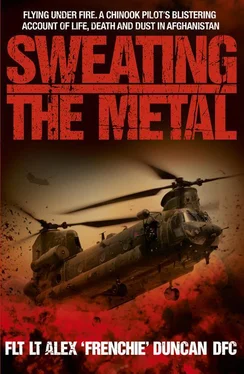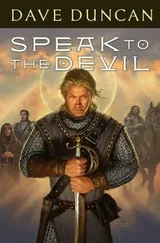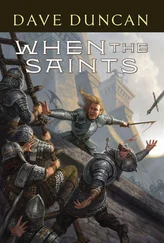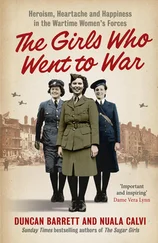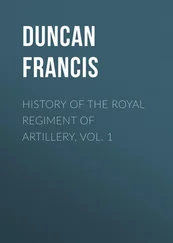I was flying from the right-hand seat with Nichol on the left, and made my approach to Now Zad. We landed first while Splinter Two Six remained in the overhead to offer us an extra degree of protection. As I came in to drop the load, we were completely enveloped by what seemed to be the biggest dust cloud in the world! The target compound was ankle-deep in really powdery sand, and the height of the walls and the compound’s size both conspired to channel the dust vertically. What normally happens is that it builds gradually from the rear, but with this it was like someone had thrown a switch and we went from no dust with clear visibility to a complete brownout. How I managed to put the load down in the middle of the compound without breaking anything is anyone’s guess, but I was pretty chuffed about it.
Having dropped the load, I rapidly transitioned away and thought myself lucky that I was first aircraft in and not the second. As Splinter Two Six came in, they got exactly the same as us, only worse, because they also had to contend with the dust cloud that we’d whipped up as we departed. Still, things aren’t meant to be easy – they just ‘are’, so you do what you have to.
With both underslung loads dropped, we landed on ANP Hill, turning and burning while our pax – a mortar platoon from the Ghurkhas that would be manning a position there – walked off. Almost out of nowhere, we were surrounded by a wall of people. It was the first time that the Chinooks had been into Now Zad, so I guess we created something of a spectacle. Dozens of women and children came out to look at the aircraft.
There was an ANP patrol milling around. Some of them engaged with the Ghurkhas that we’d dropped off, while others just stood and watched us. Then one decided he wanted to take a picture of us and started walking towards the aircraft from the front. Bear in mind that we’re on a hill, so the tips of the forward rotor blades were about four foot off the ground at their lowest point. Spinning at 225rpm, walk into one of those, as this clown was close to doing, and they’d cleave your head from your shoulders as easily as a hot knife through butter.
Everything happened in slow motion. We were frantically trying to motion to this ANP fellow, who was completely oblivious to the dangers and to our attempts to attract his attention. Fortunately for him, one of the British troops on the hill saw what we were doing and unceremoniously grabbed the Afghan policeman from behind and pulled him to the ground. There was no time to explain what he was doing – it was grab him or watch him die, so this Brit basically saved the guy’s life. But the policeman didn’t quite see things that way. He’d been trying to be clever, showing off about how close he could get, but he’d lost face in front of his mates. Worse, the women and children in the crowd saw it too.
Predictably, the guy’s mates were all laughing at him, much as I guess would happen had the characters in this particular saga been British or French. In that case, the guy who’d been dragged back would probably just have got up, thanked the guy who saved his life and laughed it off. Not this guy.
Instead, he headed towards the women and children who, although still about seventy metres away from us, were gradually edging closer. And what happened next stunned me. Instead of telling the women to get back, the ANP attacked them, using their AK-47s and batons to hit them. Faces, heads, bodies, legs – they didn’t care where they hit them. Bear in mind, these were the very people they were supposed to be protecting. They went about their task as though born to it, and the attack was vicious. But hey, they demonstrated their masculinity and I’m sure the guy who lost face felt a lot better. So that was alright then.
Nichol and I were incensed, but we were completely helpless; framed by the windscreen and with the sound muted by the noise from our aircraft it was like watching a particularly misogynistic and violent snuff movie. I’d have happily drawn my weapon and shot the guy; fuck the consequences. We’d come with the best of intentions, all about hearts and minds and winning over the local population, and this is what we had to confront: not only the evil of the Taliban, but the pig ignorance and violence shown by the narrow-minded idiots in the ANP. And they were supposed to be ‘onside’! What really got me was the knowledge that to those in the crowd, we were now guilty by association. That I really found hard to accept. It left a really sour taste in my mouth.
Much of what followed was a series of relatively straightforward taskings out of KAF; straightforward, but never mundane. How can anything be mundane when you tackle every sortie as if you’re going to war – armoured up, armed and with eyes on stalks waiting for the shots that are going to blow you out of the sky?
It’s amazing how quickly you adjust. Even at this point of the tour, less than two weeks after arriving, I could already see how much I’d advanced. Not just in terms of my flying – I was acquiring more and more knowledge of extreme tactical manoeuvres and becoming more proficient in executing them – but also in terms of my mindset. I had a frame of reference now; I’d flown missions where intelligence said the Taliban were waiting for us, and although nothing had happened, you only know that with the benefit of hindsight. For each sortie I flew with the expectation of something happening. It was a tick in the box; I’d done what I’d trained to do and I hadn’t been found wanting. Some people might call it courage. But what is courage, after all? I’ve heard it said that bravery is being the only one who knows you’re afraid. To me, that isn’t bravery, it’s leadership. It’s what being an officer is all about.
Every sortie I flew, I flew aggressively. That might sound nonsensical, but just as you can drive a car aggressively, so you can fly an aircraft like that too – even one as big and heavy as the Chinook. I had good teachers in the captains I flew with and I’m a perfectionist – if I learned a new trick, or another aggressive way to scrub speed off in as short a distance as possible, I honed it until it was second nature. Every mission was about doing it to the best of my ability, learning something from it and acting as aggressively as possible so as to deter the enemy from having a go. Every day we stayed alive was a day that we learned something.
The view from the office was something I never tired of either. Despite the risks – aviation per se is a risky business; military aviation the riskiest of all – I still feel privileged to do what I do and one of the best aspects of flying in Afghanistan was the ability to forget, if only for a few seconds, the reality of the conflict we found ourselves in and just take in the majesty and breathtaking, forbiddingly beautiful vista of Kajaki from the air.
The Kajaki Dam is a particularly important asset in Helmand, providing as it does the water that irrigates the Helmand Valley, and satisfying the demand for electricity for the whole province. Along with Musa Qala, Sangin and Now Zad, it came under increasing and prolonged attacks from the Taliban, who were effectively laying siege to it. Night after night, they would launch mortar attacks against the small contingent of the Afghan National Army (ANA) and the private security team led by an American contractor who defended it. Colonel Tootal was under pressure to bolster its defences but simply didn’t have a spare company to deploy there: they were all committed elsewhere.
The stunning beauty of Kajaki has to be seen to be believed, and is a startling contrast to the arid, dusty landscape that surrounds it. The dam itself was built by the US in 1953 and further developed in 1975. It holds back the melt water that flows from the Hindu Kush in a mammoth lake of the most intense aquamarine hue. The water then flows through the single working turbine, generating enough power to serve the demands of those in the valley, and emerging in a torrent of foaming white water that feeds into the crystal clear waters of the Helmand River.
Читать дальше
